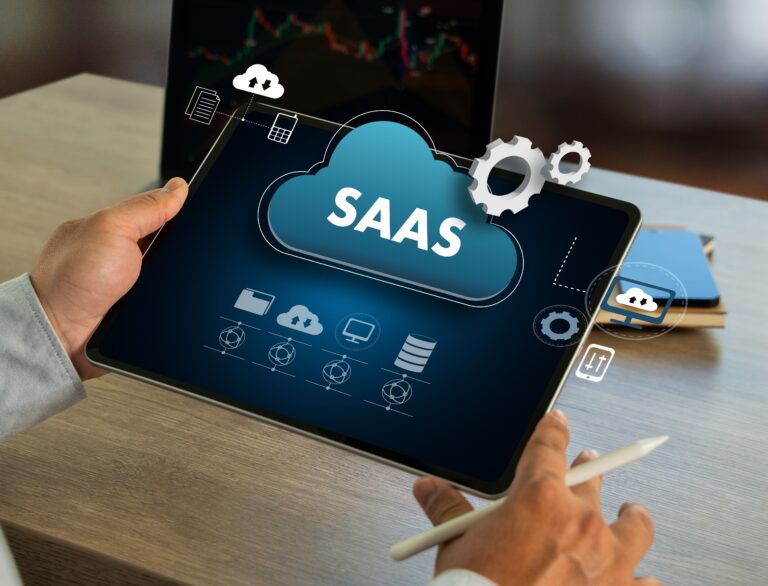USE CASE
ERP Integration with Invoiced
Smoothly Integrate Your ERP with Invoiced Accounts Receivable Software
Your ERP application offers best-in-class functionality for managing your daily business operations, but it can’t provide automated workflows for your vital accounts receivable (A/R) functions. That’s where Invoiced comes in. When you integrate your ERP with the Invoiced A/R platform, you incorporate advanced billing and collections capabilities that help you get paid faster—with little to no manual effort from your accounting team.

A/R and ERP Integration in Minutes

Your business can incorporate automated billing and collections capabilities from your ERP environment in minutes. Follow a simple series of steps to integrate Invoiced A/R with your ERP system.
How Integrating Your ERP with Invoiced Works for You
- Centralize data: When your ERP and A/R operations are integrated, teams across your business can easily access centralized data from both environments.
- Boost efficiency and savings: Connecting your ERP and A/R environments makes your processes more efficient, driving down costs.
- Improve visibility: With seamless accounting and ERP integration, you gain better visibility into your financial health and business operations.
ERP Integrations
Accounting ERP Integrations
ERP Integration scenarios
Integrate Your ERP with Invoiced and Boost Performance Across Your Business
When you connect Invoiced to your ERP environment, you’ll have industry-leading tools for automated billing, collections, and reporting at your fingertips. This cohesive integration ensures data flows effortlessly between systems, reducing manual effort and minimizing errors. With Invoiced, you can count on greater efficiency, improved cash flow management, and provide an enhanced customer experience.
Automate Your Invoice Creation and Delivery
ERP systems are important in centralizing financial operations and data, but they typically aren’t designed to perform key A/R functions—like invoicing—with much sophistication.
Integrating Invoiced with your ERP software gives you the advanced A/R functionality you need to create personalized invoices and send them via your customers’ preferred delivery channels—all without manual effort from your A/R team.
Plus, you can easily configure automated workflows that route invoices to the appropriate modules in your ERP system without human intervention.


Automated Payment Reminders and Follow-ups
Additionally, ERP applications aren’t designed with automated workflows for sending payment reminders and communicating effectively with customers about overdue invoices.
With an invoiced integration, you can create automated outreach cadences, customize your messaging, and set up delivery at a frequency that works for your business.
A built-in A/R inbox logs all customer communications, and with integrated task management tools, you can quickly attend to delinquent accounts that require extra follow-up.
On-target Forecasting and Advanced Reporting
Your ERP may provide your team with high-level accounting information, but for detailed A/R data that offers meaningful insight and drives better decision-making, your business needs to be on Invoiced.
Integrating Invoiced with your ERP gives you access to an A/R performance dashboard, pre-built reports on critical aspects of your A/R operations, and advanced options to create your custom reporting.
And the Invoiced platform gathers information from invoices, autopay, payment plans, promises-to-pay, and customer payment history to deliver collections forecasting you can count on.

ERP Faqs
Invoiced ERP Integration FAQs
How does Invoiced improve the invoicing process?
Invoiced pulls billing data directly from the ERP system to generate accurate invoices automatically. It can then send these invoices to customers through preferred channels, such as email or a customer portal, without manual intervention. This streamlines the invoicing process, reduces errors, and ensures timely delivery, leading to faster payment collection and improved cash flow.
Can Invoiced help with payment reminders and overdue follow-ups?
Yes, Invoiced can automatically track invoice due dates and send reminders to customers based on predefined schedules. For instance, reminders can be sent before the due date, and follow-ups can be automated for overdue payments. This feature helps reduce the time accounts receivable staff spend on follow-up tasks, increases on-time payments, and lowers the Days Sales Outstanding (DSO).
What kind of real-time reporting does Invoiced provide?
Invoiced, when integrated with ERP systems, offers real-time visibility into outstanding invoices, overdue payments, and cash inflows. It includes dashboards and analytics that provide up-to-date cash flow projections, helping finance teams with cash flow forecasting. This enables finance professionals to make more informed decisions about working capital and liquidity, supporting proactive financial planning.
How much effort is required to install the ERP connector?
The installation effort is very low. The ERP connector can be downloaded from our documentation here: Invoiced ERP Connect Documentation.
Who typically handles the ERP connector installation?
It varies by organization. Generally, the person managing the implementation or self-serve onboarding from the client side will handle it. This person, who needs admin access to both Invoiced and the ERP, could be a DevOps specialist, ERP admin, or similar resource.
What is the level of effort for data mapping in Invoiced?
Data mapping in Invoiced is a client-driven process. If the client is in implementation, the Implementation Consultant (IC) will demonstrate how data mapping works and assist while they set it up on their device during a call. They can contact support with questions if they’re not in implementation, though support doesn’t provide training.
What is the level of effort for importing spreadsheets, and how does it vary across ERPs?
Ideally, the ERP should export spreadsheets formatted to Invoiced’s ERP Connect requirements and place them in a specified folder on a set schedule. If so, the setup is quick and easy. However, some users may face challenges due to ERP limitations or lack of experience with report customization. If issues arise and the client isn’t in implementation, support may join a call to help. We may refer the client to implementation for complex cases for assistance.
How much support does Invoiced offer for implementation and troubleshooting?
Invoiced’s Implementation team will provide training and assist with setup. Support will answer questions and may join a single Zoom call to troubleshoot if necessary. However, support is generally limited to questions rather than in-depth training.
Will connecting Invoiced with ERP reduce manual data entry?
Yes, connecting Invoiced with an ERP system significantly reduces manual data entry by allowing the two systems to share and update information in real-time. This integration eliminates duplicate data entry, reduces human error, and saves time for finance teams, allowing them to focus on more strategic tasks rather than repetitive manual work.









